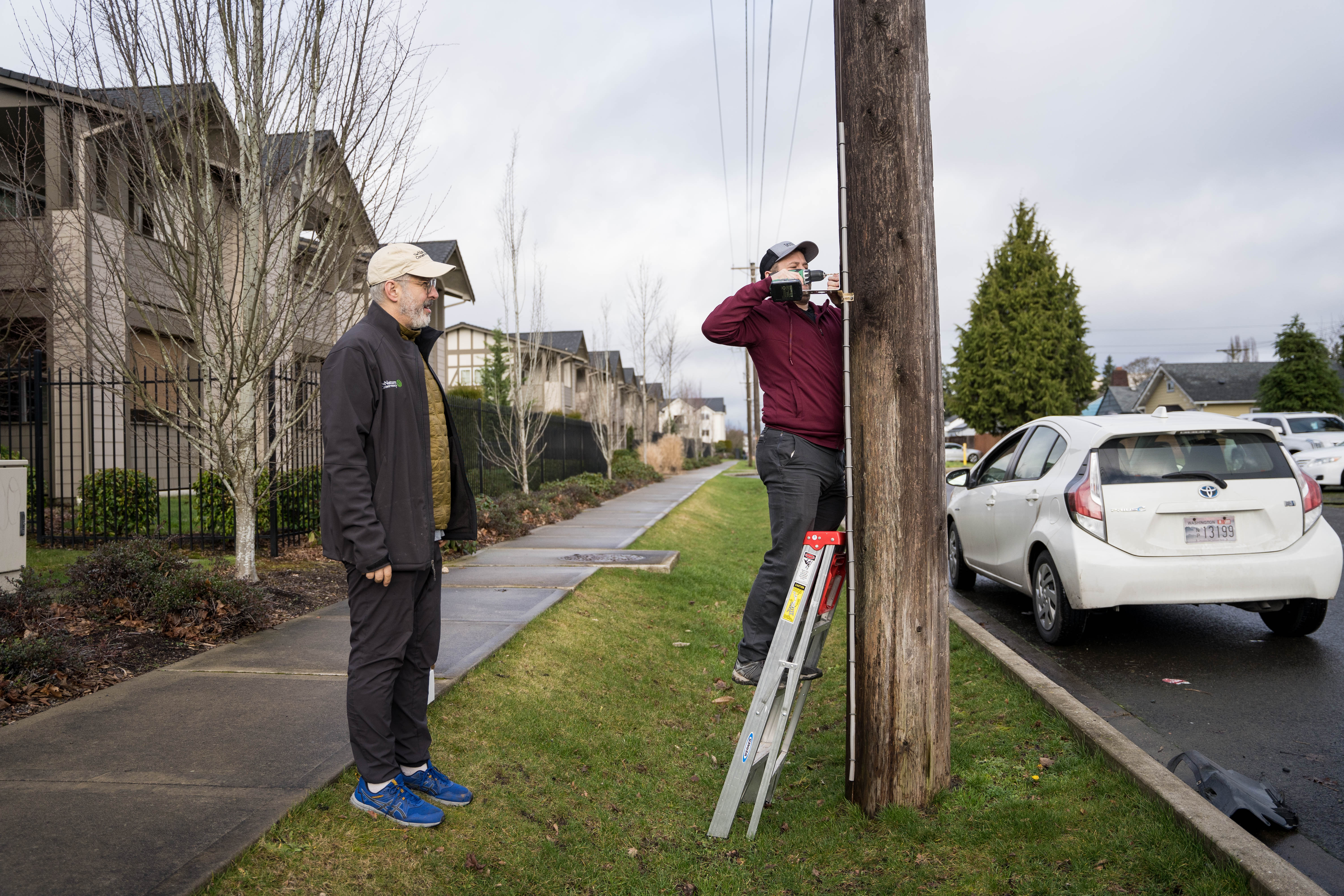
What Happens In Our Urban Neighborhoods When There’s A Heat Wave?

Listen
(Runtime 4:53)
Read
Heat waves are becoming more common in Western Washington. It’s just one outcome of worsening climate change. At the end of July, it was hot across Washington state. Like, really hot.
Western Washington is on average cooler than Eastern Washington, but it’s getting hot more often west of the Cascades. Daytime highs were over 90 degrees for six days in a row in Tacoma, with lows staying above 60 degrees at night. According to reporting by KING 5, during this time period, Olympia, Bellingham and Shelton all broke previous daily high records.
Public information officer for the Pierce County Department of Emergency Management, Mike Halliday, said Pierce County cooling centers saw 452 guests during the last week of July.
“The number of people who were using the cooling centers, county wide, was almost double what we had from the year previous,” Halliday said.
Halliday said Pierce County has opened more cooling centers, and started opening them earlier, as the frequency of heat waves in the Pacific Northwest has increased.
“Historically, heat waves both during the day and night have been increasing in Washington state,” said assistant state climatologist Karin Bumbaco.
Bumbaco said during these heat events, people living in areas with less vegetation and more pavement are experiencing hotter temps than those in greener areas. That’s because of something called the Urban Heat Island effect.
King County did a heat mapping study in 2020. The study found that temperatures differ the most at night between locations with vegetation and more urbanized areas.
“So, the locations that had more vegetation, were more rural, less concrete, were as much as 20 degrees cooler than the more urbanized areas in King County,” Bumbaco said.
Learning to deal with excessive heat will be more critical as climate change worsens.
Bumbaco said access to air conditioning, especially in urban areas, is essential. She also said ensuring equitable access to energy efficient homes that cost less to heat and cool will be critical.
As will planting more vegetation in urban areas
Quantitative Ecologist Ailene Ettinger with the Nature Conservancy said the Greening Research in Tacoma project, or GRIT, is adding greenery to South Tacoma. She’s studying those impacts.
“What we’re trying to do with this research is really understand on the ground what is happening in a neighborhood that currently has low tree canopy cover as tree planting efforts take place,” Ettinger said.
Preliminary data from GRIT shows during the month of July in Tacoma, air temperatures were hotter in areas where there was less tree canopy cover.
The Nature Conservancy, as part of the GRIT project, installed 60 devices that continuously measure air temperature throughout South Tacoma, an area of the city that has the lowest tree canopy cover.
Data for three of the devices on South Tacoma Way showed different maximum temperatures on the hottest day in July. The one that has no street trees near it reached almost 97 degrees, while the one that has street trees within 10 meters was closer to 96 degrees. Nearby South Park was about 95 degrees.
“The forested park would have more shade,” Ettinger said. “That’s one thing that contributes to the cooling effect that trees can provide in cities.”
But Ettinger said it’s not just the shade that changes the air temperature. While grounds in parks are covered with dirt or greenery, most other parts of our neighborhoods have sidewalks and pavements — impervious surfaces that trap and reflect heat.
“That paved surface really absorbs more heat from the sun, more energy from the sun, and re-radiates that, so it creates hotter temperatures,” Ettinger said.
The devices showed just that. The device not near any trees recorded the hottest average temperature and the device in the park recorded the lowest.
Yon Rowe is a resident of South Tacoma. Rowe experiences the cooling effect that canopy cover has on her home.
“I’m fortunate enough to have a tree canopy that goes over my front yard and actually over the whole house, and so it stays fairly cool in there,” Rowe said.
Rowe said her property has the most shade on her block and she notices the difference on hot days when she steps out from the shaded area on her property.
Even so, Rowe says the warmer nights this summer disrupted her sleep. But, installing screens on her windows to get a cross breeze at night has provided her with some relief.
While nighttime temperatures are increasing, Halliday said the department of emergency management hasn’t started keeping cooling centers open at night. He said the department would consider this if the community needed it.
Beyond being uncomfortable, heat can be deadly. The Pierce County Medical Examiner’s Office confirmed at least one death due to this summer’s high temperatures.















